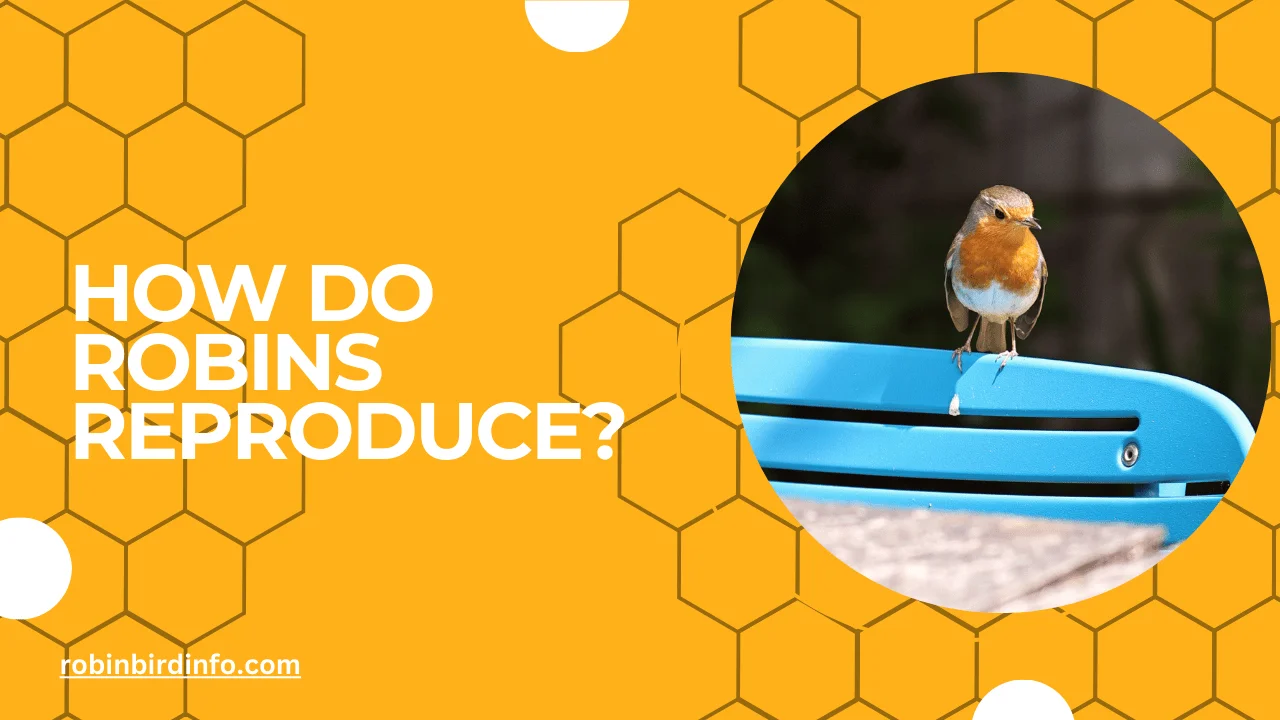We all know the classic image of the robin: a cheerful songbird happily hopping across your lawn, a welcome symbol of spring.
But what if I told you this seemingly harmless bird can erupt in a surprising display of aggression? It’s true! Robins, while generally peaceful, are fiercely protective creatures, especially when it comes to their territory and young.
Witnessing a robin dive-bombing another bird, puffed-up chest and all, can be quite a shock.
This hidden side of robins raises a fascinating question: how does such a territorial and protective nature play into their reproduction? Understanding how robins reproduce sheds light on the very reason behind these sometimes aggressive behaviors.
This blog post delves into the fascinating world of robin reproduction, revealing the intricate dance between finding a mate, building a nest, raising young, and the fierce determination that drives it all.
Contents
Section 1: Mating Rituals and Pair Bonding
Courtship Behaviors: Male Robins engage in a variety of courtship displays to attract females. These displays include singing elaborate songs, fluffing up their feathers, and performing aerial acrobatics.
Pair Bonding: Once a pair bond is formed, male and female Robins work together to raise their young. The pair bond can last for several breeding seasons, and they often return to the same nesting territory each year.
Section 2: Nest Building
Nest Construction: Robins build cup-shaped nests using a variety of materials, including twigs, grass, leaves, and mud. They often line the nest with softer materials, such as hair or feathers, for added comfort.
Nest Placement: Robins typically build their nests in trees, shrubs, or on buildings. They prefer sheltered locations that are protected from wind, rain, and predators.
Section 3: Egg Laying and Incubation
Egg Laying: Female Robins usually lay 3-4 eggs per clutch. The eggs are a beautiful pale blue color. The timing of egg laying can vary depending on factors such as weather conditions and food availability.
Incubation Period: The incubation period for American Robin eggs is approximately 12-14 days. Both male and female Robins share the responsibility of incubating the eggs, taking turns sitting on the nest to keep the eggs warm.
Parental Care: Both parents play an active role in caring for the young. They work together to feed the nestlings, protect them from predators, and keep them warm.
Section 4: Hatching and Fledging
Hatching Process: After the incubation period, the eggs hatch, and the young Robins emerge as helpless nestlings. They are covered in downy feathers and are completely dependent on their parents for food and warmth.
Parental Care: Both parents continue to care for the nestlings, feeding them a diet of insects. They also protect the nestlings from predators and keep them warm.
Fledging: After about two weeks, the young Robins fledge, or leave the nest. They are not yet fully capable of flying and spend their first few days hopping around and practicing their flight skills.
Section 5: Conservation Implications

Habitat Loss and Fragmentation: Habitat loss and fragmentation can negatively impact Robin breeding success. The loss of suitable nesting and foraging sites can reduce the number of successful breeding attempts.
Predation and Parasitism: Predators such as cats, snakes, and raccoons can prey on Robin nests and young. Parasites, like mites and lice, can weaken birds and reduce their reproductive success.
Conservation Strategies: To protect Robin populations, it is important to conserve their habitats, reduce pesticide use, and provide bird-friendly landscapes. By creating a healthy environment, we can help ensure the continued success of Robin breeding.
Conclusion
The breeding behavior of American Robins is a fascinating aspect of their life cycle. By understanding the various stages of their reproductive process, we can appreciate the complexity of their behavior and the challenges they face.
By taking steps to protect their habitats and reduce threats, we can help ensure the survival of these beloved birds for generations to come.
FAQ’s
Do both male and female Robins build the nest?
Yes, both male and female Robins contribute to nest building. They work together to gather materials and construct the nest.
How many eggs do Robins typically lay?
Robins typically lay 3-4 eggs per clutch.
How long does it take for Robin eggs to hatch?
The incubation period for Robin eggs is typically around 12-14 days.
What do baby Robins eat?
Baby Robins are fed a diet of insects, such as caterpillars, worms, and beetles.
When do Robins start breeding?
The timing of Robin breeding can vary depending on geographic location and weather conditions. In many areas, Robins begin breeding in the spring.
How long do Robin chicks stay in the nest?
Robin chicks typically stay in the nest for about 14-16 days before fledging.








